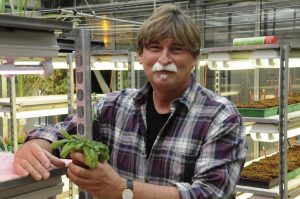Boquila trifoliolata mimics leaves of an artificial plastic host plant
Upon discovery that the Boquila trifoliolata is capable of flexible leaf mimicry, the question of the mechanism behind this ability has been unanswered. Here, we demonstrate that plant vision possibly via plant-specific ocelli is a plausible hypothesis. A simple experiment by placing an artificial vine model above the living plants has shown that these will attempt to mimic the artificial leaves. The experiment has been carried out with multiple plants, and each plant has shown attempts at mimicry. It was observed that mimic leaves showed altered leaf areas, perimeters, lengths, and widths compared to non-mimic leaves. We have calculated four morphometrical features and observed that mimic leaves showed higher aspect ratio and lower rectangularity and form factor compared to non-mimic leaves.
Broadening the definition of a nervous system to better understand the evolution of plants and animals
Sergio Miguel-Tomé & Rodolfo R. Llinás
Most textbook definitions recognize only animals as having nervous systems. However, for the past couple decades, botanists have been meticulously studying long-distance signaling systems in plants, and some researchers have stated that plants have a simple nervous system. Thus, an academic conflict has emerged between those who defend and those who deny the existence of a nervous system in plants. This article analyses that debate, and we propose an alternative to answering yes or no: broadening the definition of a nervous system to include plants. We claim that a definition broader than the current one, which is based only on a phylogenetic viewpoint, would be helpful in obtaining a deeper understanding of how evolution has driven the features of signal generation, transmission and processing in multicellular beings.
Autophagy for Resetting of Plant Heat Stress Memory
Autophagy is important for resetting memory of heat stress via control of heat shock proteins degradation. Autophagy mutants retain heat shock proteins longer and, therefore, display longer thermomemory.
Flowers Anticipate Revisits of Pollinators via Memory Based System
Stamen presentation in Nasa poissoniana (Loasaceae) flowers is based on previously experienced pollinator visitation intervals. Using the unique ability of fast and precise stamen movements in response to a previous experiences with pollinators. Flowers of Nasa poissoniana are able to perceive, record and memorize visitations and adjust their flower behavior based on previous experiences. In other words, flowers anticipate revisits of pollinators by learning from previously experienced visitation intervals.
https://www.tandfonline.com/doi/abs/10.1080/15592324.2019.1595320
https://www.nytimes.com/2019/04/20/science/plants-moving-memory.htmlAboveground Mechanical Stimuli Affect Belowground Plant Communication
Maize plants can detect the presence of their neighbours and modify
their growth behaviour. Above ground interactions between neighboring
maize plants by brief light touches affect on below-ground root-root
communication. This study urges re-interpretation of results in
experiments in which plants are touched during the experiment. The
ecological significance of the observed responses still needs to be
further explored.
http://journals.plos.org/plosone/article?id=10.1371/journal.pone.0195646
https://www.theguardian.com/science/2018/may/02/plants-talk-to-each-other-through-their-roots
Leaf Trichomes as Acoustic Antennae of Plants
Arabidopsis trichomes (hair cells) respond to mechanical stimuli by initiating potential signaling factors in themselves and in the neighboring cells. These vibrational responses of Arabidopsis trichomes support the hypothesis that trichomes respond acoustically to vibrations associated with feeding caterpillars. Trichomes have vibrational modes in the frequency range of the sounds of feeding caterpillars, encouraging further experimentation to determine whether trichomes serve as mechanical antennae. Arabidopsis plants have been reported recently to react to the sounds of caterpillars of Pieris rapae chewing on its leaves by promoting synthesis of toxins that can deter herbivory. Identifying leaf trichomes as acoustic antennae of plant cells suggests potential “ears” of Arabidopsis.
Anaesthetics have the same effects on plants as they have on animals and humans
A new study published in Annals of Botany has shown that plants react to anaesthetics in a similar way to animals and humans, suggesting plants are ideal objects for testing anaesthetics actions in future.When exposed to anaesthetics, a number of plants lost both their autonomous and touch-induced movements. Venus flytraps no longer generate electrical signals and their traps remain open when trigger hairs were touched, and growing pea tendrils stopped their autonomous movements and were immobilized in a curled shape. The results of this study suggest that the action of anaesthetic at cellular and organ levels are similar in plants and animals.
Toxic Nectar Deters Floral Robbery – Flowers Control Bee Behaviour
Nectar robbing bumblebees are detered from visiting and feeding from Aconitum flowers via alkaloids which are more distasteful to nectar robbers than to pollinating honeybees. Obviously, plants can finely control behaviour of insects using mixtures of alkaloids and other non-nutrient compounds enriched within their nectar exudates.
http://www.cell.com/current-biology/abstract/S0960-9822(17)30870-9
http://www.newstatesman.com/culture/nature/2017/08/nectar-robbers-how-flowers-discriminate-against-wrong-kind-bees
Plant microRNAs Control Fate of Honeybee Caste Development
Plant microRNAs control honeybee caste development by preventing larval differentiation into queens and inducing formation of workers. Especially important in this respect is miRNA162a which targets genes of the TOR complex. Previously, dietary plant microRNAs were reported also in human blood but possible impacts on humans are still not clarified.
http://journals.plos.org/plosgenetics/article?id=10.1371/journal.pgen.1006946
https://cosmosmagazine.com/biology/plant-molecules-stop-worker-bees-from-ascending-throne
Tomato Plants Turn Caterpillars into Cannibals
Tomato plants attacked by small mottled willow moth caterpillars release chemicals with turn these caterpillars into cannibals. This plant induced caterpillar cannibalism benefit tomatoes in two different ways. Firstly, cannibalism directly reduces vegetarian caterpillar abundance. Secondly, cannibalistic caterpillars eat significantly less tomato leafs.
https://www.nature.com/articles/s41559-017-0231-6
https://www.nature.com/news/plants-turn-caterpillars-into-cannibals-1.22281
The Plantoid Project: How robotic plants could help save the environment
https://eandt.theiet.org/content/articles/2017/07/the-plantoid-project-how-artificial-plants-could-help-save-the-environment/
On the ‘in-tuned’ peas
Growing roots locate a water source by sensing the vibrations generated by water moving inside pipes, even in the absence of substrate moisture. When both moisture and acoustic cues were available, roots preferentially used moisture in the soil over acoustic vibrations, suggesting that acoustic gradients enable roots to broadly detect a water source at a distance, while moisture gradients help them to reach their target more accurately.
http://link.springer.com/article/10.1007%2Fs00442-017-3862-z
On the pavlovian peas
’The Mind of Plants: thinking the unthinkable‘ http://dx.doi.org/10.1080/19420889.2017.1288333
Shoot-Piped Light Activates Root Apices
Plants ‘see’ underground by channelling shoot-piped light to their root apices- These findings demonstrate that the underground roots directly sense stem-piped light to monitor the aboveground light environment during plant environmental adaptation. Piped shoot light influences gene expression in the roots by activating root phytochrome B. Stem-piped light also affects root gravitropism.
Deceptive Plants are Folling Insects – Ceropegia Plants Mimic Attacked Honeybees to Attract Kleptoparasitic Flies for Pollination
Ceropegia sandersonii plant controls female flies of the genus Desmometopa. Ceropegia plants mimics attacked honeybees to attract kleptoparasitic flies for their pollination. This study describes a new example of how plants fool and manipulate insects for their own benefits. This is new case of chemical mimicry whereby Ceropegia plants controls carnivorous Desmometopa flies.
http://www.cell.com/current-biology/pdfExtended/S0960-9822(16)30879-X
https://www.sciencenews.org/article/flower-lures-pollinators-smell-honeybee-fear
https://www.uni-bayreuth.de/de/universitaet/presse/archiv/2016/137en-mimikry.pdf
https://www.newscientist.com/article/2108328-flower-hijacks-the-fragrance-of-attacked-bees-to-imprison-flies/
Plant Behavior
The paper, Plant Behavior by D. Liu, is in a special issue of CBE Life Sciences Education from Fall 2014 on Plant Biology. This is a great example of how biologists and educators are recognizing that plants teach important lessons in biological function!
https://www.ncbi.nlm.nih.gov/pmc/articles/PMC4152196/pdf/363.pdf
Smart Plants and Evolution of Global Ecosystems
https://www.princeton.edu/main/news/archive/S44/88/96G13/index.xml?section=topstories
Plant protein behaves like a prion
http://www.nature.com/news/plant-protein-behaves-like-a-prion-1.19824
Farting plants have a built-in stink bomb that deters predators
https://www.newscientist.com/article/mg22930554-800-farting-plants-have-a-built-in-stink-bomb-that-deters-predators/
Climbing Plant Mimics Host Plant Leaves
Boquila trifoliolata—a vine native to the area that the research pair has discovered, is able to mimic multiple hosts
Read more at: http://phys.org/news/2014-04-vine-mimic-multiple-hosts.html#jCp
Boquila trifoliolata – a climbing vine plant native to Chile and Argentina mimics multiple hosts. The plasticity involves changes in shapes, sizes, and colors of Boquila trifoliolata leaves to mimic precisely leaves of host plants.
Read more at: http://www.sciencedirect.com/science/article/pii/S0960982214002693
German Forest Ranger Finds That Trees Have Social Networks, Too
“The Hidden Life of Trees: What They Feel, How They Communicate — Discoveries From a Secret World.”
Peter Wohlleben’s best seller sold 320,000 copies in 2015 in Germany, and it’s English version in will be published in September 2016. The book covers trees as social beings, nursing sick neighbors, warning each other of danger by sending electrical signals across associated symbiotic fungal networks (“Wood Wide Web”); and, for reasons unknown, keeping the ancient stumps of long-felled companions alive for centuries by feeding them via these fungal networks.
The Venus Flytrap, a Plant That Can Count
By applying a series of trigger-hair stimulations, the touch hormone jasmonic acid signaling pathway is activated already after the second stimulus. More than three APs are required to trigger an expression of genes encoding prey-degrading hydrolases. The motor cells that close the leafy trap when they received two signals within about 20 seconds. The trap is remembering the first signal for a 20 seconds, and then the first electrical pulse is forgotten, resetting the trapping process. (Böhm et al. Current Biology, Available online: 21 January 2016).
http://www.nytimes.com/2016/02/02/science/the-venus-flytrap-a-plant-that-can-count.html
Do we underestimate the power of plants and trees?
http://www.bbc.com/news/science-environment-34849374
Books
Communication in Plants: Neuronal Aspects of Plant Life
By Baluška F, Volkmann D, Mancuso S (eds)
2006 Springer Verlag
Plant-Environment Interactions: From Sensory Plant Biology to Active Plant Behavior
By Baluška F (ed)
2009 Springer Verlag
Signaling and Communication in Plant Symbiosis
By Baluška F, Perotto S (eds)
2011 Springer Verlag
Plant Communication from Ecological Perspective
By Baluška F, Ninkovic V (eds)
2011 Springer Verlag
Long-Distance Systemic Signaling and Communication
By Baluška F (ed)
2013 Springer Verlag
Brilliant Green: The Surprising History and Science of Plant Intelligence
by Stefano Mancuso and Alessandra Viola
2015 Island Press
Plant Behaviour and Intelligence
by Anthony Trewavas
2014 Oxford University Press
What a Plant Knows: A Field Guide to the Senses
by Daniel Chamovitz
2012 Scientific American/Farrar, Strauss and Giroux
Alice in the Land of Plants: Biology of Plants and Their Importance for Planet Earth
by Yiannis Manetas
2012 Springer Verlag Berlin Heidelberg
Biocommunication of Plants
edited by Gunther Witzany and Frantisek Baluska
2012 Springer Verlag Berlin Heidelberg
Plant Electrophysiology: Signaling and Responses
edited by Alexander G.
Plant-Plant Interactions (with Ariel Novoplansky)
This lecture examines how plants perceive and respond to other plants, how plant-plant interactions affect the growth and productivity of individual plants and the broader effects on plant communities. Plant-plant interactions can be competitive, such as competition for light and nutrients, but facilitation also occurs in plant communities. This lecture addresses the emerging understanding of the signals and cues that underpin plant-plant interactions, as well as how plants respond to those cues. Applications of this knowledge include mitigating the effects of invasive plants, and improving crop plant productivity by harnessing the power of plants to work with each other, and limiting their tendencies to act against each other.




